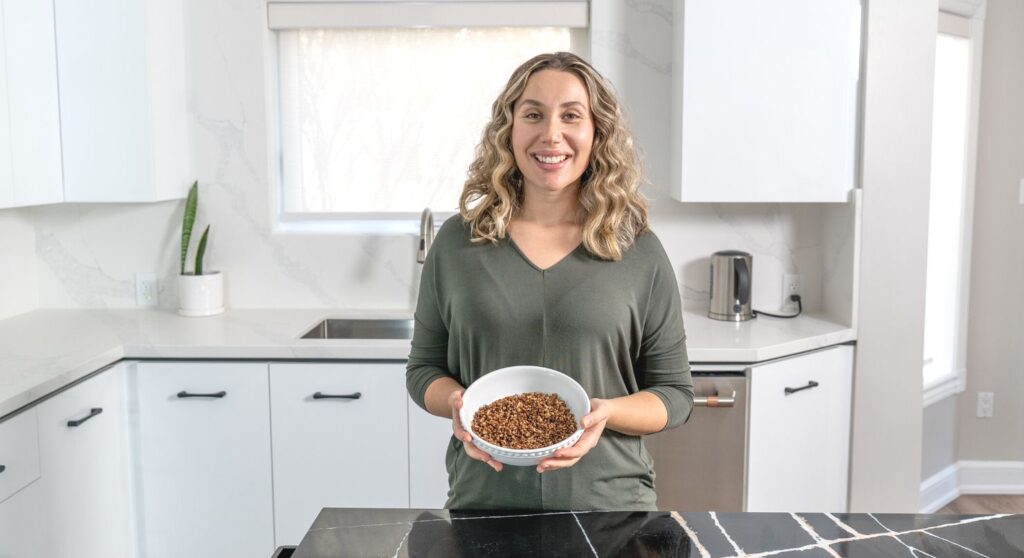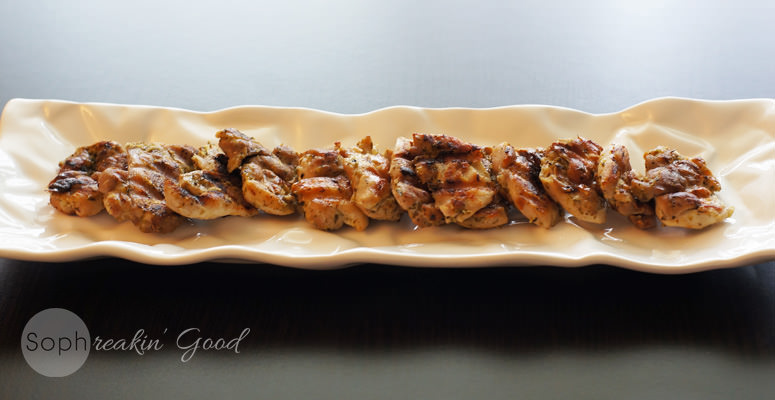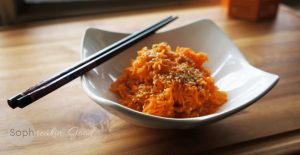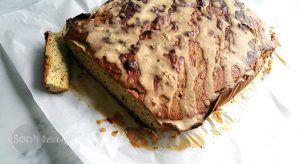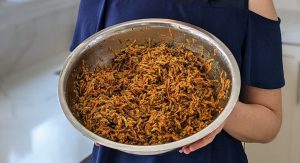Buckwheat is a delicious seed that is gluten free and unbelievably delicious. It has a signature nutty flavour that goes well with so many dishes. Popular the world over, buckwheat is especially popular in Eastern European cuisine. Making perfect buckwheat kasha every time is as simple as frying the groats first; simply follow this easy buckwheat recipe and you’re guaranteed the best buckwheat ever! In this recipe, I use roasted buckwheat groats for a delicious depth of flavour. You can also buy raw buckwheat groats, which are beige/green in colour, and can be used to make fermented buckwheat bread

Foolproof Buckwheat Recipe
Ingredients
- 1-2 tbsp Butter (or fat of choice)
- 1 cup Toasted Buckwheat Groats
- 1 pinch Salt
- 1½ cups Water (or cooking liquid such as broth)
Instructions
- Melt butter in a saucepan over medium heat. Add in buckwheat and toast for 1-2 minutes, stirring continuously, until the buckwheat is fragrant
- Add water and a generous pinch of salt, then cover and bring to a boil.
- Once boiling, reduce to a simmer and cook covered for 10 minutes. If there is any liquid remaining after 10 minutes, simply cook for a few minutes uncovered to let the remaining liquid evaporate.
- Taste for seasoning and enjoy!
Video
Frequently Asked Questions About Buckwheat
What is Buckwheat?
Buckwheat is technically a seed, and is often classified as a pseudo grain or pseudo cereal. It is gluten free and enjoyed all around the world either as a porridge (kasha, cooked buckwheat groats) or ground into a flour and used in various baked goods. Bees love buckwheat too – honey made from buckwheat flowers is dark in colour with a distinct, rich flavour.
Is buckwheat best eaten hot or cold?
When eaten hot, cooked buckwheat makes an excellent addition to a wide variety of meals, much like rice or quinoa. Try it in pilafs, with vegetables, or as a base for meats and stews. Buckwheat can also be enjoyed cold, similar to overnight oats – simply mixed cooked, cooled buckwheat with all your favourite toppings for a delicious, hearty breakfast or snack.
Is buckwheat gluten free?
Yes! Despite the term “wheat” in the name, buckwheat is more closely related to plants like rhubarb, and it is naturally gluten free. This makes it an excellent choice for those with food sensitivities or allergies.
What are the nutritional benefits of buckwheat?
Buckwheat is a good source of protein, fiber, and a variety of vitamins and minerals, including B vitamins, magnesium, and zinc. It is also high in antioxidants and has been linked to a number of potential health benefits, including reduced blood pressure, improved blood sugar control, and a lower risk of heart disease.
Can you eat buckwheat if you have a grain allergy?
Buckwheat is not a true grain, but rather a type of plant that is grown for its seeds. As a result, it is not typically considered to be a problem for people with grain allergies. However, if you have a severe allergy or intolerance to grains, it is always a good idea to speak with a healthcare professional before introducing new foods into your diet.
What are some common dishes made with buckwheat?
Buckwheat is commonly used in a variety of dishes, including pancakes, crepes, noodles, and porridge. It is also often used as a substitute for rice or other grains in dishes such as pilafs and stir-fries. In addition, buckwheat flour is often used to make bread, cakes, and other baked goods.
How should you store buckwheat?
Buckwheat should be stored in an airtight container in a cool, dry place. It will keep for several months when stored properly.
What is the difference between buckwheat and kasha?
Kasha is a term used to describe roasted or toasted buckwheat groats. It is commonly used in Eastern European cuisine and has a distinct, nutty flavor. Buckwheat groats that have not been roasted or toasted are known as raw buckwheat.
Can you sprout buckwheat?
Yes, you can sprout buckwheat. To do so, soak the seeds in water for a few hours or overnight, then drain and rinse them. Place the seeds in a sprouting jar or tray, and keep them moist by rinsing them several times a day. It typically takes 3-5 days for the sprouts to reach their desired length. Once sprouted, buckwheat can be used in salads, sandwiches, or as a topping for soups and other dishes.
Is buckwheat a good source of iron?
Buckwheat is a good source of iron, providing about 3.5 milligrams per 100 grams. However, it is important to note that the body absorbs non-heme iron (the type found in plant-based foods like buckwheat) less efficiently than heme iron (the type found in animal-based foods like meat and poultry). As a result, it may be more challenging for vegetarians and vegans to get enough iron from their diet and they may need to include iron-rich plant-based foods or supplements to meet their needs.
What is buckwheat tea and how is it made?
Buckwheat tea is made by steeping dried, roasted buckwheat seeds in hot water. It has a nutty, slightly sweet flavor and is often served as a caffeine-free alternative to regular tea. To make buckwheat tea, simply add a few tablespoons of roasted buckwheat seeds to a cup of hot water and let it steep for a few minutes. Strain the seeds out and enjoy the tea hot or cold. You can also add a sweetener or other flavorings, such as honey or lemon, to taste.
Is buckwheat AIP compliant?
The Autoimmune Protocol (AIP) is a dietary approach that is designed to help individuals with autoimmune diseases manage their symptoms by eliminating certain foods that may trigger inflammation. Buckwheat is typically considered to be compliant with the AIP diet because it is a naturally gluten-free grain that is not known to cause allergic reactions or other adverse reactions in most people. However, it is always a good idea to consult with a healthcare professional or registered dietitian before making any changes to your diet, particularly if you have a medical condition or food intolerance. They can help you determine the best approach for managing your symptoms and meeting your nutritional needs.

